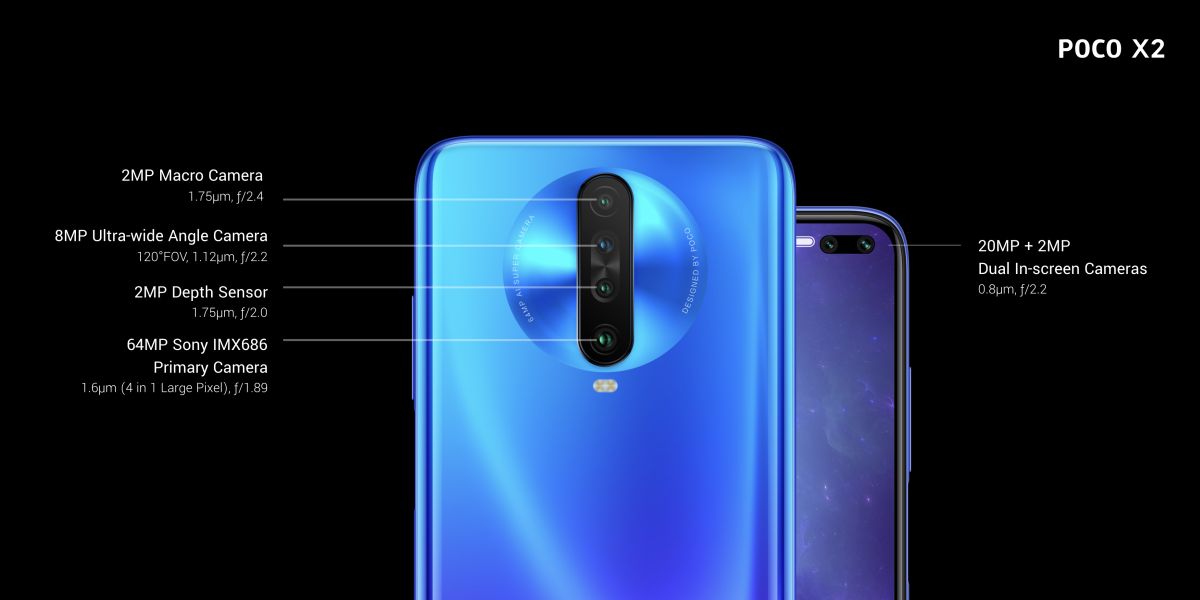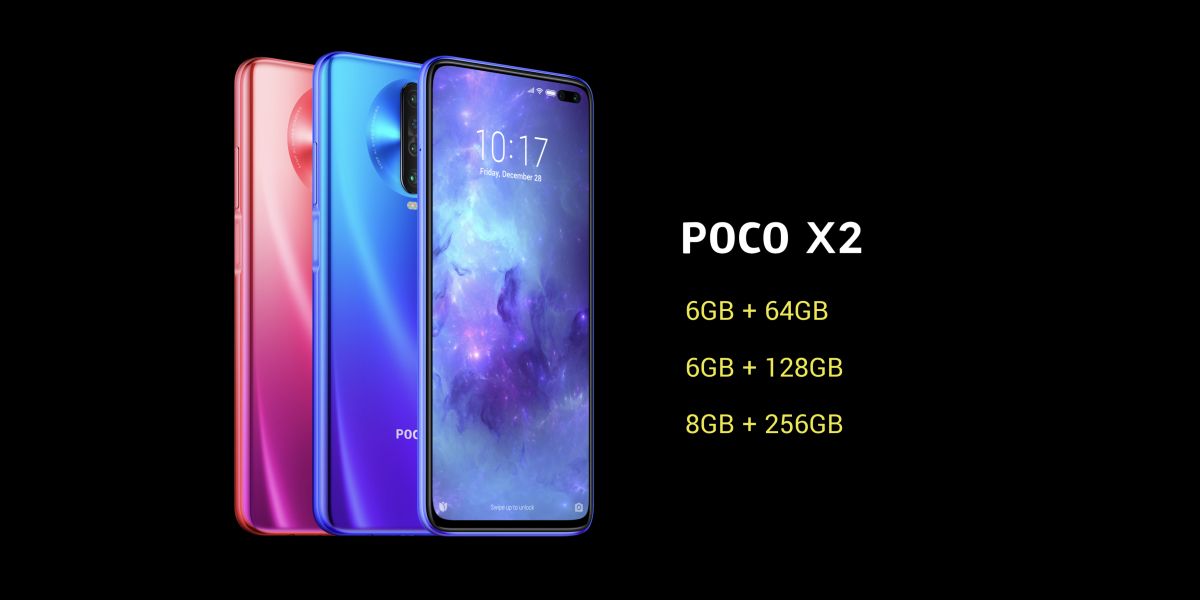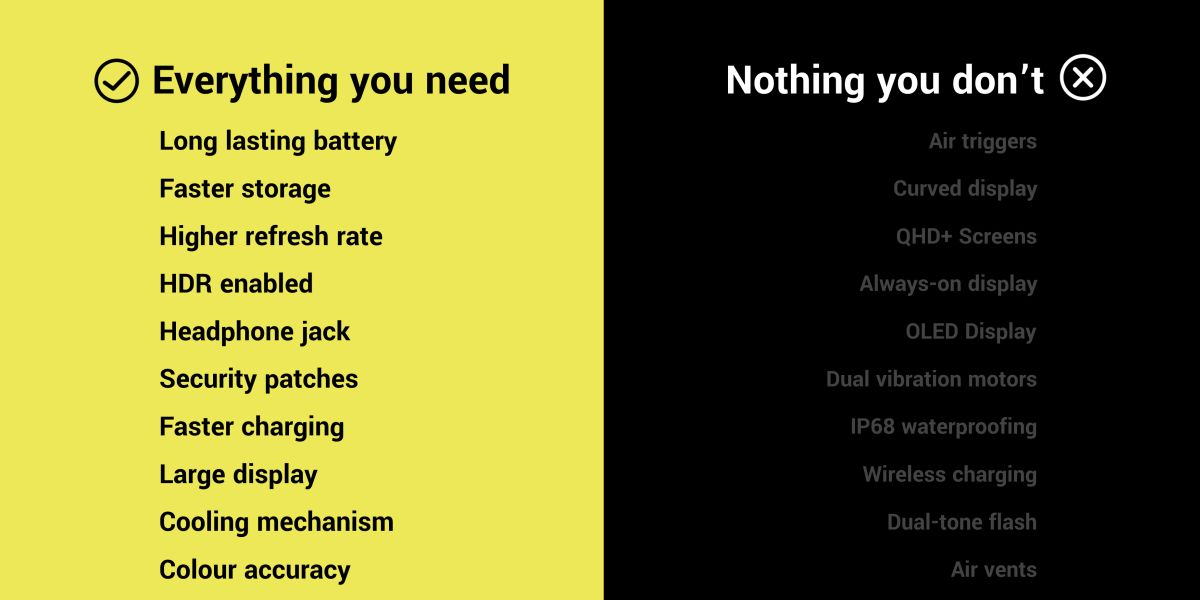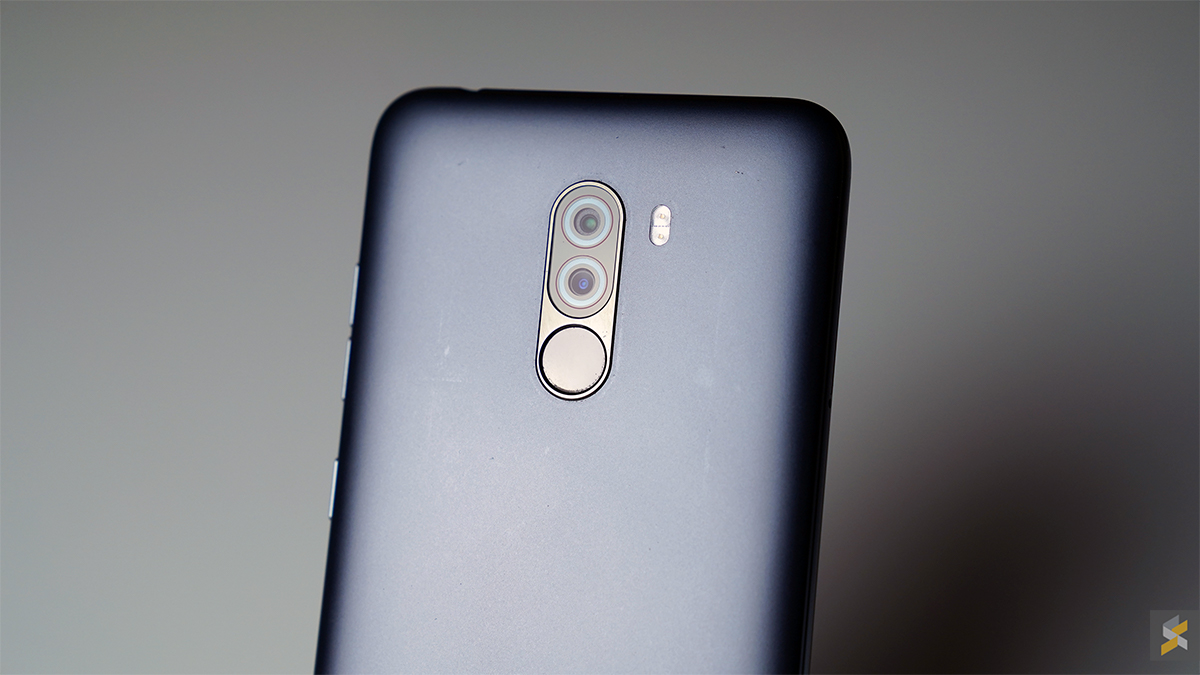The new Pocophone has been launched in India, with the Poco X2 (as it’s called in India) being announced for the Indian market. The launch event—streamed live on YouTube and other social media channels—revealed the worst kept secret of recent times: the Poco X2 is a rebadged Redmi K30. But more on that later.
Specs-wise, the headlining feature of the Poco X2 is the 6.67″ 120Hz display, something typically reserved for more expensive smartphones. However, the X2 uses an IPS LCD display, which means that this is the only smartphone that I’ve come across that has a high refresh rate without an OLED panel. Poco also says that the new 20:9 aspect ratio helps to offer a wider view when playing games, along with a more cinematic view when watching videos.
Meanwhile, the Pocophone is powered by a Qualcomm Snapdragon 730G, the “most powerful of the Qualcomm Snapdragon 700 series”—still, not a flagship Snapdragon chipset, but perhaps the next best thing. That’s mated to a top-spec configuration of 8GB of RAM and 256GB of UFS2.1 storage.
The Poco X2 has a pretty large 4,500mAh battery, and rather generously, a 27W charger is also included in the box. For some context, the 6GB/64GB Mi 9T Pro (base model price: RM1,699) does not come with a 27W power brick, despite support.
Keeping in line with its target market of mobile gamers, the Poco X2 still comes with LiquidCool Tech, which will supposedly transfer heat at 3 times the speed of a smartphone without a liquid cooling system.

Photography-wise, you have a quad-camera rear setup, with a 2MP macro camera, an 8MP ultra-wide angle shooter, a 2MP depth sensor, and a 64MP primary camera that uses a Sony IMX686 sensor. For selfies, you get dual “in-screen” cameras (20MP + 2MP), which are basically cameras housed in a punch-hole cutout, similar to the Samsung Galaxy S10 Plus. The team also touted the video capabilities of the video creators—960 FPS slow-mo capture, along with Xiaomi’s Vlog mode.
Meanwhile, you get 3D curved Gorilla Glass 5 on the rear of the device, and you get the same toughened glass on the front of the device. Keeping things simple, you also have a side-mounted fingerprint-scanner, so no in-display biometric scanner here.

The Poco X2 is available in 3 colours: Atlantis Blue, Matrix Purple, and Phoenix Red, while you get memory configurations of up to 8GB of RAM and 256 of storage. Official pricing in India is as follows:
Poco X2—6GB + 64GB—INR15,999 (about RM925)
Poco X2—6GB + 128GB—INR16,999 (about RM983)
Poco X2—8GB + 256GB—INR19,999 (about Rm1,157)
A shoutout to our fans, developers & initial team for keeping POCO relevant!
— POCO India (@IndiaPOCO) February 4, 2020
As a thank you note, we have a limited edition packaging where #POCOX2's X2 on the box comprises all the fan names. #SmoothAF #POCO pic.twitter.com/pFIoLwghQ4
At the moment, we don’t have any news on Malaysian availability just yet, but based on past patterns, Xiaomi’s smartphones launched in India tend to be the global variants.
Not the Pocophone we were hoping for

Poco categorises OLED displays as something you don’t need, along with air triggers and IP68 water resistance (only p2i splash coating), which isn’t really something I agree with. I’m not the biggest mobile gamer out there, but from what I can tell, air triggers offer a level of flexibility for mobile gamers, especially with first-person shooter (FPS) games.
So yes, basically a Redmi K30. It’s worth noting that I’m not saying that the Poco X2 is a bad choice. In fact, it’s a really, really good value proposition. Looking at the launch price in India, you’re getting a 120Hz display—even if it isn’t AMOLED—and most other phones that use a Snapdragon 730G like the Mi Note 10 or the Samsung Galaxy A71 are usually priced higher, while even the older Mi 9T that’s powered by a SD730 retails for RM1,199.
Still, it’s been almost a year and a half since the original Pocophone F1 was launched, and fans (including this writer) were waiting for something that was made in the same spirit of things. See, the original Pocophone F1 was built around the idea of giving users the bare essentials, at the best possible price. That’s power, with a class-leading Snapdragon 845, a large battery for its time, at an affordable price—INR20,999 (about RM1,214) for the base variant with 6GB of RAM and 64GB of storage.

Perhaps this is also because the X2 isn’t really a successor to the Pocophone F1, which would explain the new name. It still maintains the value aspect of the Pocophone series, but there’s one thing that really misses the mark, for me: it’s not original enough. The F1 was an utterly original idea, really powerful internals squeezed into a plastic casing, with no frills.
The Poco X2, on the other hand, is simply a rebadged phone—and a really good one, at that. But I can’t deny that I’m hugely disappointed, because the Pocophone F1 was, in many ways, iconic. And if the X2 isn’t the successor to the F1, whatever happened to the Poco X1?








